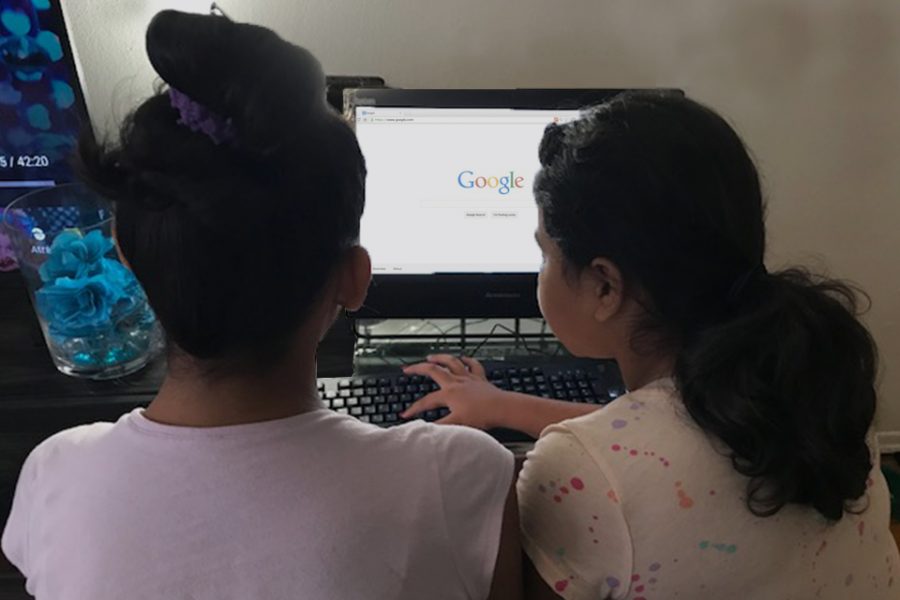St. John’s Law Students, Faculty, and Staff Help to Bridge the Digital Divide
Eleven-year-old KV* couldn’t contain her excitement. She sat down with her family’s new laptop right away, figured out how it worked, and showed her 13-year-old sister, CV, how to use it for school. The girls new connectivity came by way of the in-house Child Advocacy Clinic (CAC) at St. John’s Law, which represents them in Special Immigrant Juvenile Status (SIJS) proceedings in Queens Family Court.
“For these young girls, and for millions of children in New York’s underserved communities, computers and other internet-enabled devices help to bridge a digital divide that has only widened with the pandemic, school closures, and remote learning,” says Professor Jennifer Baum, who has directed the CAC for over 10 years. “The student clinicians and I work closely with KV and CV, who has a learning and developmental disability, and could see that they were struggling to learn without a computer. So, we put out a call to Law School students, faculty, and staff to see if anyone had a device to donate.”
Among those answering the call were Tracy Bonaventure and Felix Rosario, who provide IT support at the Law School. “It was perfect timing,” Bonaventure says. “We had some gently used equipment that was going to be picked up for recycling. When we got Jen’s message, Felix grabbed one of the used laptops and got it ready for the family. He supplied a new mouse, keyboard, and hard drive and configured in Windows. We were so happy to help.”
The collaborative effort was meaningful for the CAC students, too. “It was quite a challenging process to get the girls enrolled in their local public school, and it involved several conference calls and email collaborations with the school district,” explains Laura Chambers ’22, who teamed with Stephanie Lamerce ’22 in representing KV and CV. “Once the girls were finally enrolled, we discovered during a weekly Zoom meeting with their mother that KV was on a waitlist to receive a tablet for school, but was not given a time frame. We knew we had to do something.”
Advocating for her clients in this way, Chambers says, was uniquely rewarding. “Although I came into the CAC looking forward to helping children in need, I honestly thought the work I’d be doing would be mechanical and routine. I’m so glad that it was much more exciting, and that it actually required me to think on my feet, rearrange my schedule on a moment’s notice, and brainstorm with my partner to come up with creative solutions to help our kids.”
Lamerce agrees, sharing that the experience “completely changed” her perception of client advocacy. “As an attorney, your main priority is to do what’s best for your client,” she shares. “At the beginning of the semester, I assumed that what was best for my clients was seeking SIJS. However, in that moment, when they desperately needed to be online, what was best for my clients was receiving a device in order to attend school virtually.”
For Lamerce, serving her clients in this way also had personal resonance. “As a first-generation law student and a child of immigrants, I’m humbled to have been in a position to help people that I can relate to on a fundamental level,” she says. “I’m glad that we were able to not only seek legal recourse for our clients, but to also assist them in their personal affairs. It was a great experience facilitated by Professor Baum and the CAC, and I hope many others have the same opportunity.”\
*Initials are being used to protect privacy.

